June in the Loft
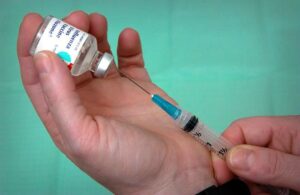 Now that old bird racing is winding down and breeding is nearly complete, fanciers around the country are starting to think about young bird racing. Folks are shipping their futurity hopefuls their selected races, and fanciers are separating their breeders. Now’s the best time to vaccinate young birds.
Now that old bird racing is winding down and breeding is nearly complete, fanciers around the country are starting to think about young bird racing. Folks are shipping their futurity hopefuls their selected races, and fanciers are separating their breeders. Now’s the best time to vaccinate young birds.
The first weekend in June is my favorite time to vaccinate young birds, but there is no hard and fast rule about the timing for this key aspect of pigeon health. Generally, all of my youngsters are weaned by the first weekend in June, and most have been flying around the loft for a while. For the most part, they have wing strength, or, at the very least, are loft broken. Because they also have a little age on them, their immune system has had a chance to develop, which is very important.
The Lohmann Animal Health pox vaccine is what I use to vaccinate for pox, and, while I’ve tried the needle method, I prefer the brush on the upper leg. I do the PMV vaccination at the same time as pox, only with a ½ cc injection under the skin in the neck or groin. We use the PMV-1 killed virus vaccine also from Lohmann Animal Health. This is a time-proven vaccine, and the results bear out the fact that it does the pigeons no future harm in racing. When we fly the light system, we usually cut the 9th and 10th flights on the same day that we do the vaccinations. Each young bird also gets a worm tablet and a canker tablet. We generally use Moxidectin or Moxidectin Plus from APC for worms, and choose Ronidazole tablets for canker.
Thirteen days after we have cut them, we pull the 9th and 10th flights. Why 13 days? In the past, we used to wait 10, then 12, and then 14 days, and almost always had one or two birds whose flights didn’t grow back normally, if at all. Years ago, after hearing my good friend Freddie Rivera tell a seminar crowd that 13 days was the magic number for pulling flights, I tried it that year and have done so ever since without one bird molting a bad flight! I don’t know the scientific reason for it (and perhaps Freddie doesn’t either!), but there is no substitute for experience. Even if it’s only coincidence, I like to stick with what works, and 13 days works really well for me.
At the time we pull the 9th and 10th flights, we also dip the young birds in a 57 percent Malathion solution and give them their follow-up worm pill. The solution of Malathion we use is ¼ cup of 57 percent Malathion to one gallon of water. We individually dip each bird, being extremely careful not to dip the pigeon’s head in the solution. We fan each wing through this solution until it is thoroughly soaked.
Take care to dip the pigeon before pulling the flight, for two reasons. First, we don’t want Malathion entering the pigeon’s bloodstream through the newly pulled flight. And second, soaking the pigeon makes the flight just a little easier to pull. This procedure takes time, but I have not found anything to compare with it in keeping the pigeons free of lice and pigeon flies. I also like what it does for the feather condition, since after about four days, when they become completely dry, they develop a nice powdery sheen and become very soft and pliable.
My uncle, who was an avid pigeon fancier, taught me this procedure when I was just ten or twelve years old, and I’ve used it ever since. Of course, the solutions of Malathion in those days were much stronger, as I can remember only having to use a tablespoon per two gallons in those days. Over the years, many people have commented on the quality of feathers that our pigeons always seem to have, and the Malathion is the secret. The 57 percent Malathion is the formulation that Siegel’s carries.
We try to allow the birds to dry off in direct sunlight, and I think that this has something to do with the great feather texture as well. This usually takes no more than 30 to 45 minutes on a warm day. Once the birds are dry, I know that they will be parasite free at least until I start training. I always rest well after this work is accomplished, because I know that this is the most important step to getting the babies ready for a successful young bird season.
A note on the flight pulling procedure: I know that some fanciers claim that they like to pull the ninth first and then the tenth after the ninth has grown out. The main reason for this is to keep the pigeons flying. I agree in principle with this thinking and believe that this procedure is probably excellent. I would do it, too, if not for the fact that the system I’ve been using for so many years has worked extremely well, and most of the teams of birds put on that system have been winners-not only for me, but for quite a few lofts around the country.
Another step that we take at this time is to semi-darken our loft, although in our case, the loft was designed specifically for this purpose. Now we leave the birds alone. Except for feeding and watering, we do not disturb the pigeons. The sexes remain mixed, and no pigeons are released for the next three weeks. Special “teepees” are set up against the walls in every nook and cranny of the loft, and our special young bird nest boxes are opened to entice pairs to form and take the nests as their own.
We feed them a mixture of 1/3 wheat, 1/3 barley, and 1/3 Nutra-Blend pellets from Purina (mixing the green label and gold label pellets at 50 percent of each type). This is to keep their body weight under control, yet still give the proper nutrients. This mixture also helps get the body molt started, which is one of our goals in following this procedure. We like to give, among other things, Biochol from Oropharma at least three to four days a week at this time for the next four weeks, as we find it greatly benefits the feathers.
Since this is usually the time that we are traveling in Belgium, we let the young birds sit in the semi-dark loft for the entire time we are away, usually three weeks. We give no medication-only supplements-for the first 17 days that they are locked up, because we want the molt to start and certain medications can slow it. At the middle of the third week, the birds are given a canker treatment for three days, followed by one day of Digestal and Pigeon Power or Ferro-Prodol on the feed.
When we return, I am always amazed at how the young birds have developed. They really molt well under these conditions, as they are under absolutely no stress, having sat in a semi-dark loft for a number of weeks. They’ve been vaccinated, wormed, and dipped, so neither internal nor external parasites should be bothering them.
Just after I return from Europe at the end of June or early July, I start letting the young birds out. Their ninth and tenth flights are now three-quarters of the way grown out, and I feel safe in letting the birds start “getting their wings back under them.” They fly only if they want to. Doxyvet and Doxy-T, from the Australian Pigeon Company, are very effective respiratory treatments for the birds at this time.. Always remember to remove the grit and mineral supplements whenever you are treating the birds with respiratory antibiotics.
The end of May to the latter part of November is a critical six-month period during which many fanciers tend to neglect their breeders, but those who take extra care during this time are the ones who generally have the best breeding seasons. It’s important to remember that the condition of our breeders starting from the moment they are separated at the end of the spring, throughout the summer, and into the fall, is of ultimate importance in producing a premium-quality group of young birds the next year.

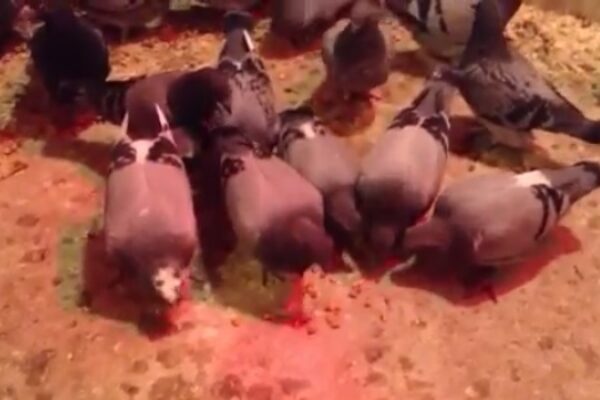
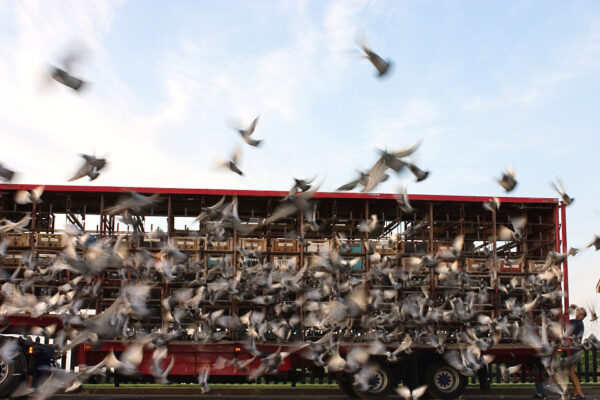
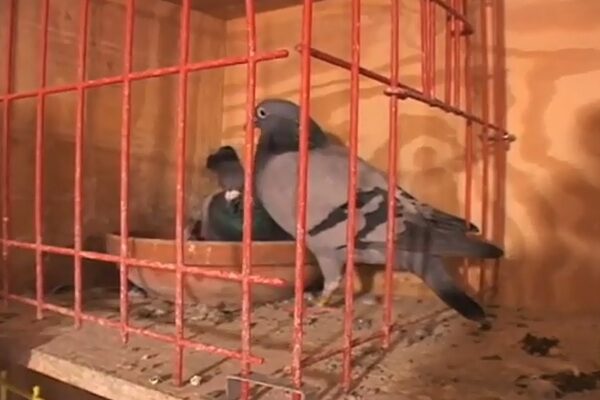
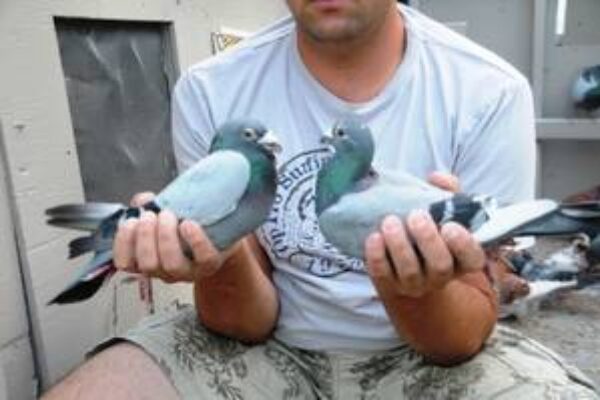

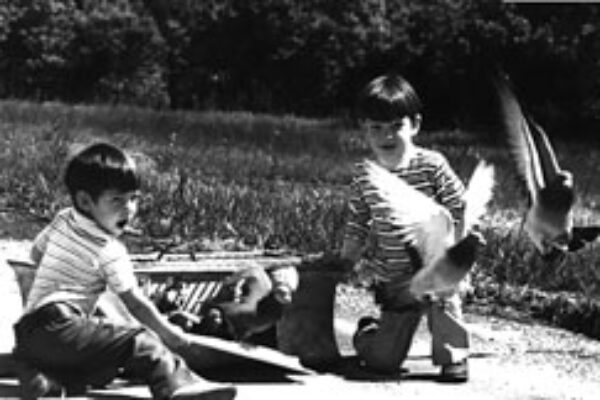


Hi Chris,
Have a nice day! at what age need to vaccinate our pigeon for Paramyxo Virus (PMV-1) and do we need to combine Newcastle Disease Virus (NDV)
June is winter time in South Africa. Wet, cold and windy. So I prefer my pigeons to rest in their warm, cosy and dry lofts. The ventilation of my new racing pigeon lofts on my brother’s distribution warehouse roof top, I’ve enlisted a pro ventilation technition.
Preparing young bird for the race season is always forgotten by fancier, better to put a schedule in writing or note it in the calender, that way we can can follow it accordingly to schedule.
GOOD READING,WHY THE NEED TO PULL,FLIGHTS?I DO NOT UNDERSTAND,YOU MUST BE BREEDING AND RACING AT DIFFERENT TIMES TO THE UK,MOST OF ALL BREEDING IS DONE BY MARCH,BIRDS ARE THEN PREPARED TO RACE, LET ME KNOW THANKS JOHN
Thanks for this info,i really am learning a lot from you.god bless.
i think that all the information above mentioned is exattly very right and every one can take a lot of benefit form all the prventery tecnoques displayed above.
In My Experience in my Country, the breeder used like me is a vaccine pro, cock chicken but Have a dosage to apply in Pigeon,.. What you think, is better, or not.?
Hi Chris
If you acidify the drinking water when using antibiotics there is no need to remove grit and mineral supplements. It has recently been discovered that minerals will not affect absorption when citric acid is added to Doxycycline so recovery is quicker.
Cheers
Steve